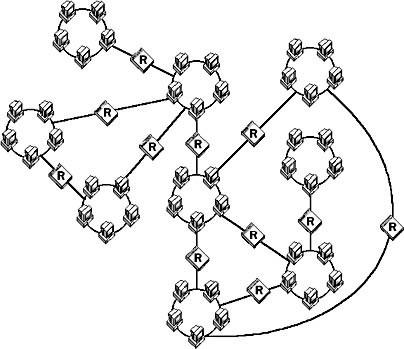Definition of Mesh Topology in Network Encyclopedia.
What is Mesh Topology?
Mesh Topology is a network topology in which additional networking components are used to provided redundant data paths. This topology provides fault tolerance – if a wire, hub, switch, or other component fails, data can travel along an alternate path.
A diagram of a mesh network might resemble a portion of a fishing net. A mesh topology is most often used in large backbone networks in which failure of a single switch or router can result in a large portion of the network going down.
Mesh networks can use the following topologies:
- Full mesh topology: Provides a direct link between each pair of nodes (routers) on the backbone network. Full mesh topologies provide the highest level of fault tolerance but increase the computational strain on dynamic routers for calculating their routing tables. A full mesh network with N routers would have N factorial paths (1 x 2 x 3 x … x N) to calculate.
- Partial mesh topology: Includes some redundant data paths to provide some level of fault tolerance. This is the more usual implementation in large internetworks.

Mesh development history
Wireless mesh radio networks were originally developed for military applications, such that every node could dynamically serve as a router for every other node. In that way, even in the event of a failure of some nodes, the remaining nodes could continue to communicate with each other, and, if necessary, to serve as uplinks for the other nodes.
Early wireless mesh network nodes had a single half-duplex radio that, at any one instant, could either transmit or receive, but not both at the same time. This was accompanied by the development of shared mesh networks. This was subsequently superseded by more complex radio hardware that could receive packets from an upstream node and transmit packets to a downstream node simultaneously (on a different frequency or a different CDMA channel).
This allowed the development of switched mesh networks. As the size, cost, and power requirements of radios declined further, nodes could be cost-effectively equipped with multiple radios. This, in turn, permitted each radio to handle a different function, for instance, one radio for client access, and another for backhaul services.
Work in this field has been aided by the use of game theory methods to analyze strategies for the allocation of resources and routing of packets.